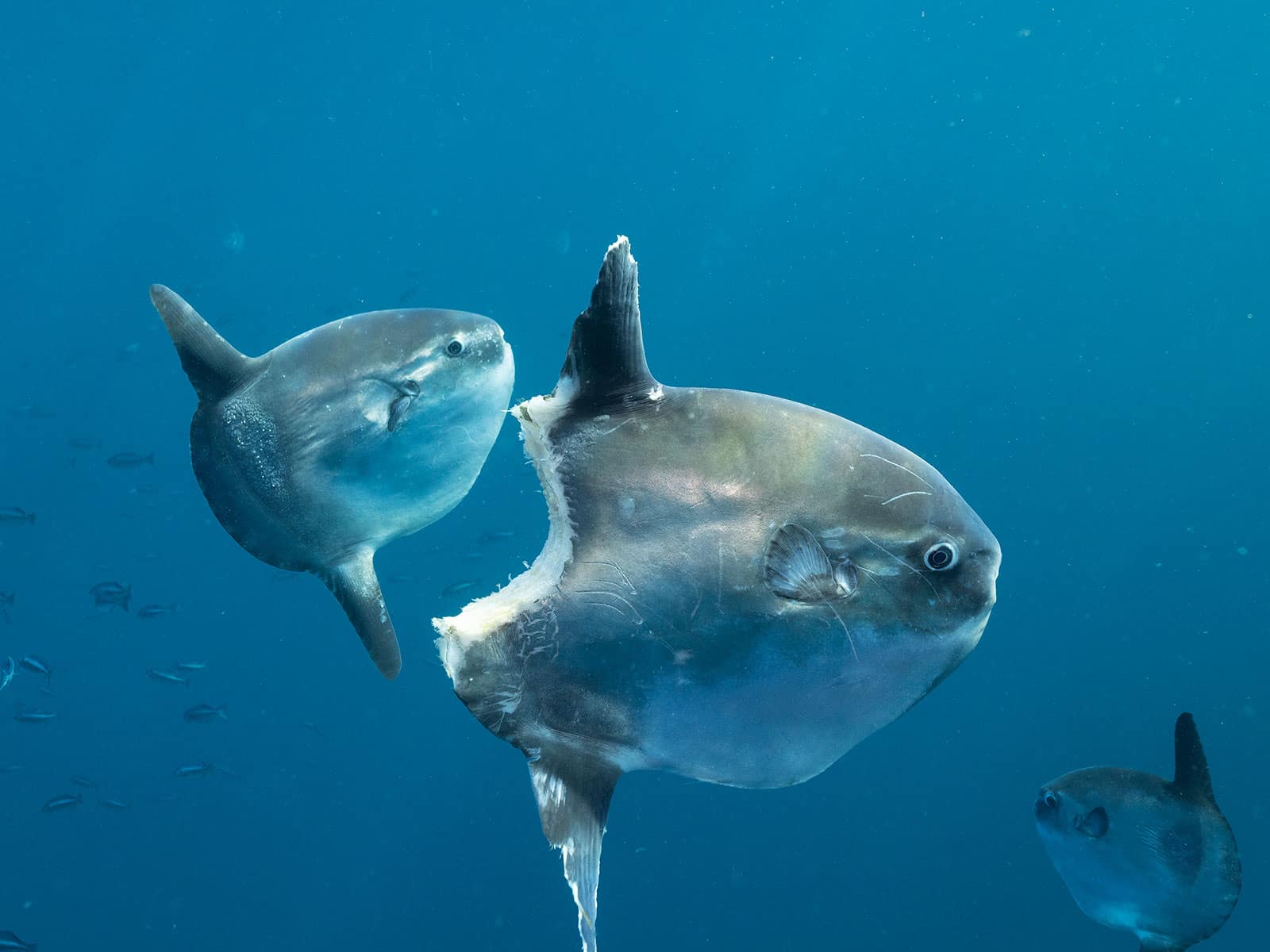Oregon’s beaches have become a hotspot for unexpected visitors: giant sunfish. But these aren’t your everyday sunfish. Several rare hoodwinker sunfish, a species only recently discovered, have been found washed ashore, leaving scientists baffled and intrigued.
Sunfish Invasion: Unraveling the Mystery
Oregon’s coast is known for its rugged beauty, but lately, it’s been making headlines for a different reason: giant sunfish, specifically the elusive “hoodwinker” variety, are showing up on the shores.
Imagine strolling along Gearhart Beach, expecting to find seashells and sand dollars, only to stumble upon a massive hoodwinker sunfish lounging on the sand. That’s precisely what happened recently, leaving beachgoers and scientists alike in awe.
While spotting a regular ocean sunfish (Mola mola) is already a remarkable experience—these creatures can grow up to ten feet long—encountering a hoodwinker is truly exceptional. These deep-sea dwellers are incredibly rare and typically stick to the open ocean, making their presence in shallow coastal waters a perplexing phenomenon.
So, why the sudden influx of these ocean giants? Scientists are exploring several possibilities, including:
- Shifting Ocean Currents: Changes in ocean currents, potentially driven by climate variations, might be pushing the sunfish closer to shore, much like invisible conveyor belts transporting them to unfamiliar territory.
- Food Source Fluctuations: Hoodwinker sunfish primarily feed on jellyfish. It’s possible that changes in their usual prey’s distribution or abundance are forcing the sunfish to venture into new areas in search of sustenance.
- Population Dynamics: While data is limited, there’s a chance that hoodwinker sunfish populations are experiencing a surge, leading to more sightings in general, including strandings.
This unusual occurrence serves as a stark reminder of the ocean’s unpredictable nature and the mysteries it still holds. As researchers delve deeper into the reasons behind these strandings, one thing remains clear: these gentle giants deserve our respect and protection.
Are There Sunfish in Oregon?
Yes, but the type of sunfish you’ll find depends on where you look.
- Freshwater Sunfish: While not as common as in other parts of the country, certain freshwater sunfish, like the Redear sunfish, have established populations in parts of Oregon, particularly in the Willamette Valley and central Oregon. These sunfish prefer the calmer, warmer waters of ponds, lakes, and reservoirs with ample vegetation.
- Ocean Sunfish: The recent sightings off the Oregon coast involve giant ocean sunfish, primarily the Mola mola and the rare Hoodwinker Sunfish. The discovery of a 7.3-foot Hoodwinker Sunfish on Gearhart Beach in June 2024 generated considerable buzz and highlighted the increasing presence of these enigmatic creatures in Oregon’s coastal waters.
Are Ocean Sunfish Good to Eat?
The question of whether ocean sunfish are edible is complex and multifaceted.
While not inherently poisonous, ocean sunfish aren’t exactly a culinary delicacy. Some who’ve sampled them describe the taste as bland, while others report a resemblance to lobster or crab. This inconsistency could stem from variations in the sunfish’s diet or preparation methods.
However, there are some important considerations:
- Toxin Accumulation: Sunfish primarily consume jellyfish, which can accumulate toxins in their bodies. Consuming sunfish that have ingested toxic jellyfish could pose health risks to humans.
- Parasite Concerns: Like many fish species, sunfish can harbor parasites. Proper cooking is essential to minimize the risk of parasitic infection.
Beyond the taste and potential health concerns, legal and ethical factors come into play:
- Protected Species: In certain regions, sunfish are protected species, making it illegal to fish for or consume them.
- Ecological Impact: Sunfish play a crucial role in regulating jellyfish populations. Their removal from the ecosystem through fishing or consumption could disrupt the delicate balance of marine life.
Considering these factors, enjoying sunfish as a food source is generally discouraged. Their ecological importance and the potential risks associated with their consumption make appreciating them for their unique biology and role in the ocean a more responsible approach.
Are Sunfish and Bluegills the Same?
It’s a common point of confusion, but the answer is a bit nuanced. Here’s the breakdown:
- Sunfish is a broad term, referring to a whole family of freshwater fish called Centrarchidae. This family includes various species, each with its own distinct characteristics.
- Bluegill (Lepomis macrochirus) is a specific species within the sunfish family.
Think of it this way: all squares are rectangles, but not all rectangles are squares. Similarly, all bluegills are sunfish, but not all sunfish are bluegills.
The bluegill stands out with its vibrant blue markings on the gills, while other sunfish sport different features. For example:
- Pumpkinseed Sunfish: Easily identifiable by the bright orange spot on their gill flap, resembling—you guessed it—a pumpkin seed.
- Redear Sunfish: These sunfish have a distinctive red “ear” marking on their gill flap.
Understanding this distinction is particularly relevant for anglers. Knowing the difference between a bluegill and other sunfish species can help you select the appropriate bait, fishing techniques, and locations to increase your chances of a successful catch.
Beyond the Beach:
For those eager to witness the wonder of ocean sunfish up close, the Seaside Aquarium offers a unique opportunity to observe these gentle giants and learn more about their biology and conservation.
The recent influx of giant sunfish to Oregon’s coast has captivated the public’s imagination, sparked scientific curiosity, and highlighted the interconnectedness of marine ecosystems. As researchers uncover the reasons behind these unusual sightings, one thing is certain: the ocean remains a place of endless wonder and discovery.
Don’t Miss Out:
While you’re exploring the wonders of the natural world, be sure to check out these captivating articles:
- Witness the incredible hunting prowess of the shoebill stork as it devours a crocodile.
- Delve into Japanese folklore and uncover the secrets of the mesmerizing umbrella yokai.










2 thoughts on “Giant Sunfish Mystery: Why Are Hoodwinkers Washing Ashore in Oregon?”
Comments are closed.